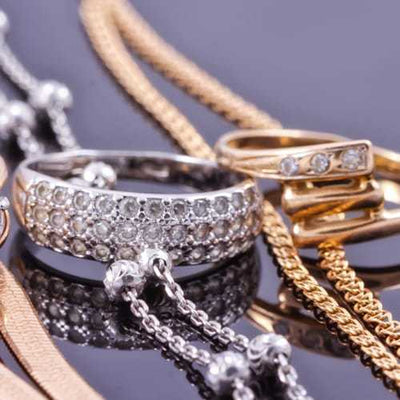What is an Emerald?
An emerald is a precious gemstone in the beryl group. The word emerald comes from the French word “esmeralde,” which was taken from the Greek word “smaragdos” which means “green stone.” The term emerald applies to any medium to dark green beryl colored by chromium. If a stone is green beryl due to the presence of only vanadium, it is simply called green beryl. Since emeralds are a variety of beryl, they fall into the same category as aquamarine gemstones and morganite.
The beauty of the emerald has made it the standard for green among colored stones for thousands of years. Emeralds are known as the birthstone for the month of May. In addition, emeralds are the common anniversary gifts for 20th and 35th wedding anniversaries.
Types of Emeralds
Emeralds are a tricky gemstone. This stems from the fact that not everyone can agree on what an emerald is. Some experts will say all green beryl stones are emeralds, but many others believe that the shade of green is extremely important in determining what is an emerald and what is just green beryl. Those who believe the shade of green is important will say that stones that are too pale aren’t emeralds.
For this reason, doublets are common emerald fakes on the market. Doublets are two pale green stones that are glued together with a deep green paste to look like an emerald. Other fakes include faceted green glass and synthetic emeralds that are passed off as natural stones by deceitful sellers. Fluorite, peridot, tourmaline, and green sapphire can also be passed off as emeralds. The sheer number of available fakes makes it very important for buyers to only make purchases from reliable dealers.
One rare type of emerald is the “Trapiche emerald.” It is characterized by star-shaped rays that come from the center of the stone in a hexagonal pattern that look a lot like asterism but are not caused by light reflection from tiny parallel inclusions. Instead, the pattern is created by black carbon impurities that form the star-shaped pattern. These rare emeralds are only found in the Boyaca emerald mining district in Colombia. They are then cut into cabochons.
Where Are Emeralds Found?
Emeralds can be found in many parts of the world. Some of the best emeralds in the world come from Colombia, where iron increases the bluish tones in the stone. Emeralds mined in Zambia are also known to have a blue tone. Brazil has also recently started producing some high-quality emeralds.
Emeralds have also been found in places like Norway, South Africa, Pakistan, Tanzania, India, and even North Carolina.
4 C’s for Emeralds
 Emeralds receive critiques for the four C’s just like diamonds, but they aren’t given specific grades.
Emeralds receive critiques for the four C’s just like diamonds, but they aren’t given specific grades.
Color
When it comes to color, the most highly desirable emeralds are bluish-green to pure green. Colors should be vivid and not too dark. High-quality emeralds will be highly transparent with evenly distributed color. If the green stone has too much yellow or blue, it will be a different variety of beryl, but not an emerald.Clarity
Inclusions are common in emeralds, so finding a stone with inclusions that can’t be seen by the naked eye is very rare. These emeralds are said to be eye-clean, and they are very valuable.
In emeralds, inclusions are usually mossy looking, and they are sometimes called “jardin,” which is the French word for garden.
Transparency is also very important with colored stones like emeralds. When inclusions start to have a negative impact on transparency, they start to decrease the value of the stone.
Cut
When cutting emeralds, the stone cutter needs to consider the depth of color in the rough stone, as well as the durability of the stone and any inclusions that could lead to weakness in the final product. Any cutting mistake can decrease the value of the stone, which could lead to big losses.
Emeralds are notoriously difficult to cut. This is due to the fact that many emeralds have significant fractures that need to be dealt with during the cutting process. These fractures can also make the stone brittle, which could cause damage during the cutting process.
The cut is also expected to maximize the effect of hue, tone, and saturation of the stone. By adjusting the emerald’s proportions and the number of facets, the cutter can affect the color of the final stone. For example, to darken a pale stone, the cutter can use a deep cut, a small table, and fewer facets. Conversely, the cutter can lighten a dark stone by using a shallow cut, a large table, and extra facets to let in more light.
Finally, cutters can deal with the dichroism (variation in color of reflected or transmitted light) of many emeralds by orienting the table to be perpendicular to the stone’s length. This can make the hue more bluish-green instead of yellowish-green.
Carat
Carat weight is the least important aspect of an emerald’s qualities. Large emeralds are very rare, which makes them highly prized and more expensive. However, emeralds come in a variety of sizes and can be as small as 0.02 carat.Caring for Emeralds
The brittle nature of emeralds can make them difficult to care for. In fact, mechanical cleaning is never recommended for these fragile gemstones. You should never use ultrasonic or steam cleaners on emeralds as the stone can shatter during the process. Instead, you can use warm water and detergent to gently clean the stones with a soft brush. Remember that oil is sometimes used to improve the color of emeralds and washing emeralds can remove this oil.
If you are in the market for emerald jewelry, contact Noe’s Jewelry today at 816-322-7227 or stop by our shop in Raymore, Missouri.
Check out the other stones in our Gemstone Series Guides:





